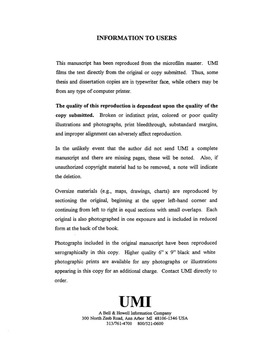| dc.contributor.advisor | Fagan, John E., | en_US |
| dc.contributor.author | Alrefai, Hazem Hejjo, | en_US |
| dc.date.accessioned | 2013-08-16T12:30:32Z | |
| dc.date.available | 2013-08-16T12:30:32Z | |
| dc.date.issued | 1999 | en_US |
| dc.identifier.uri | https://hdl.handle.net/11244/5815 | |
| dc.description.abstract | Calibration test procedures were conducted to thoroughly analyze the influence of proppant concentration on the light intensities collected by the fibers. Multiple non-linear mathematical models were developed to correlate the light intensity with proppant concentration. The models were developed to tolerate the inconsistency existed in the light intensity measurements. The inconsistency is manifested in the discrepancy between light intensities collected by the same fiber under the same test conditions. | en_US |
| dc.description.abstract | The system developed to accomplish the tasks was implemented based on a novel idea; to illuminate the inside of the prototype using embedded LEDs (Light Emitting Diodes) and collect light intensities using embedded fiber optics. The rest of the system comprises of cameras, multiplixer, processing computer, and video recording equipment, all of which are interconnected to convert the intensities collected by the fibers into an analog signal so that they could be accessed, processed and stored. The system is called the vision system. | en_US |
| dc.description.abstract | In the pursuit of improving gas and oil production, oil service companies utilize, among other techniques, fracturing treatments. Such stimulations use fracturing fluid carrying propping agent, e.g. sand, to fracture the hydrocarbon-bearing formations creating new high permeable channels through which gas/oil can be produced at a higher rate. High pressure cracks the formation of the earth and the proppant suspended in the fracturing fluid keeps the cracks open upon releasing the fracturing pressure. | en_US |
| dc.description.abstract | Due to uncontrollable factors, the images acquired by the vision system are not uniform. Hence, enhancement procedures were devised to improve the appearance of the images. Those procedures are real time procedures; they process the acquired images as they come into the system without a loss of any acquired image. | en_US |
| dc.description.abstract | The purpose of this study is to develop a system to monitor, in real-time, the static or dynamic fluid behind the prototype 6 inch walls, to be the first to map, as a function of time and position across the prototype, the concentration of the proppant suspended in the fluid, and to measure dynamic or static proppant settling and proppant dune build up. | en_US |
| dc.description.abstract | Even though such stimulation treatments have been performed for almost forty years, the rheology of those fluids are not well known, especially since most of them are time-dependent. Therefore, there is a need to study and characterize different fracturing fluids. Hence, a large-scale fracture prototype was built. The prototype consists of 6 inch parallel steel walls simulating a fracture below the earth surface. It is capable of withstanding high pressures up to 10,000 psi. The prototype was outfitted with instrumentation to measure: temperatures, pressures, and velocities of the fluids under investigation. Still the study of fracturing fluids would have been incomplete without developing a system that would allow the scientists to view and characterize the events occurring inside the 6 inch steel walls. | en_US |
| dc.format.extent | x, 99 leaves : | en_US |
| dc.subject | Oil wells Hydraulic fracturing. | en_US |
| dc.subject | Flow visualization. | en_US |
| dc.subject | Engineering, Petroleum. | en_US |
| dc.subject | Engineering, Mining. | en_US |
| dc.subject | Engineering, Electronics and Electrical. | en_US |
| dc.title | Flow visualization technique for investigation of fractures. | en_US |
| dc.type | Thesis | en_US |
| dc.thesis.degree | Ph.D. | en_US |
| dc.thesis.degreeDiscipline | College of Engineering | en_US |
| dc.note | Major Professor: John E. Fagan. | en_US |
| dc.note | Source: Dissertation Abstracts International, Volume: 60-05, Section: B, page: 2317. | en_US |
| ou.identifier | (UMI)AAI9930532 | en_US |
| ou.group | College of Engineering | |
